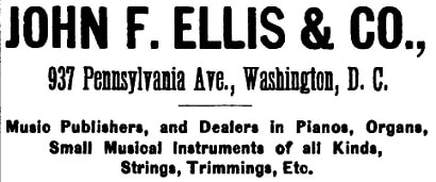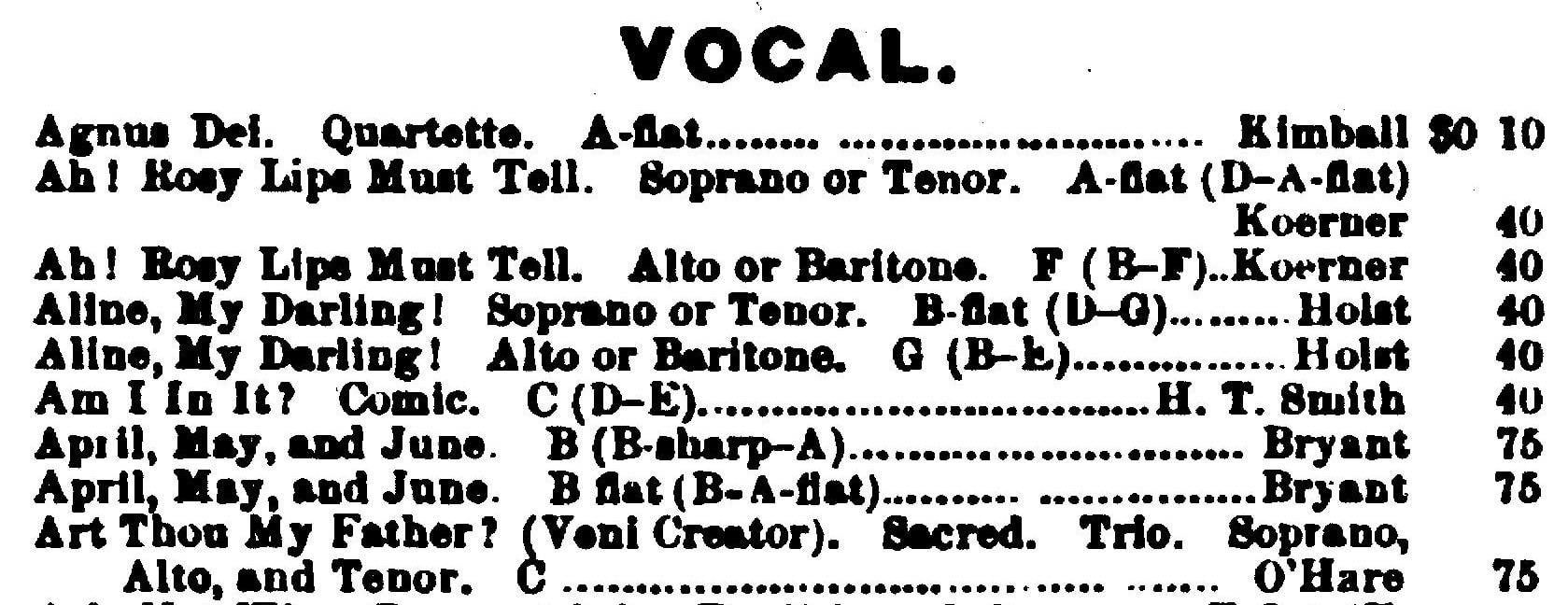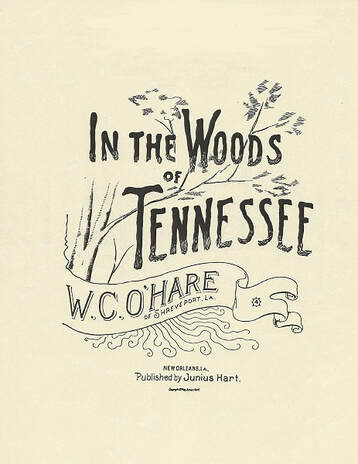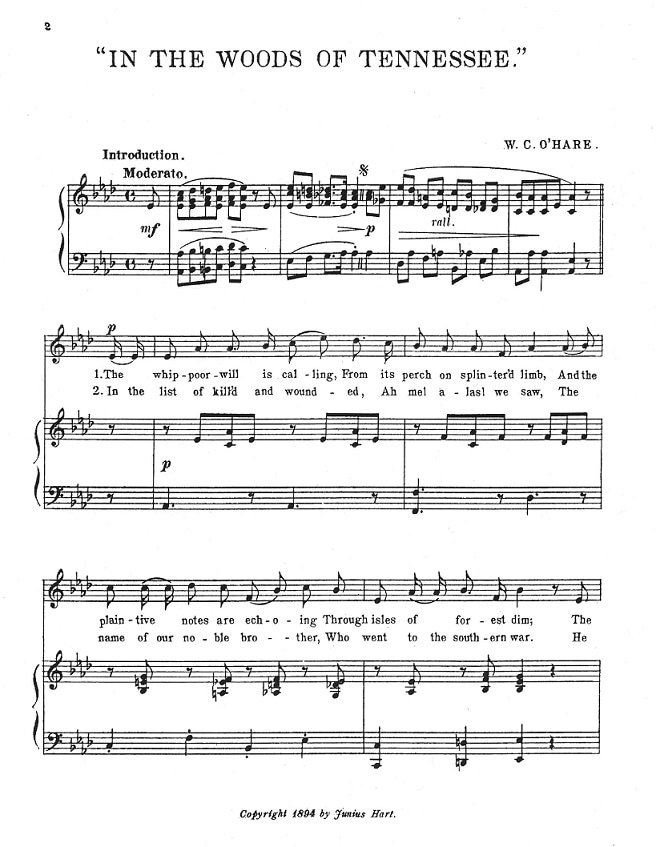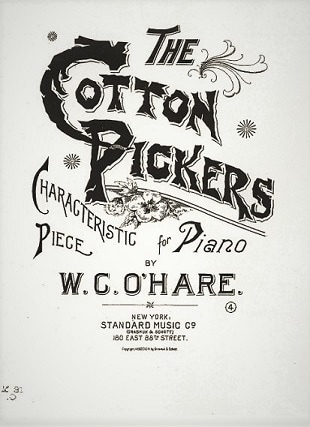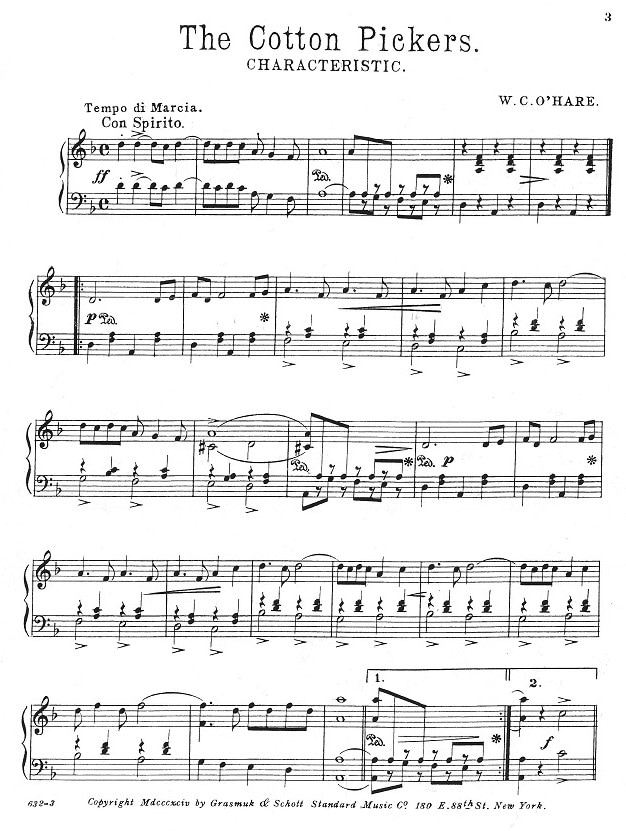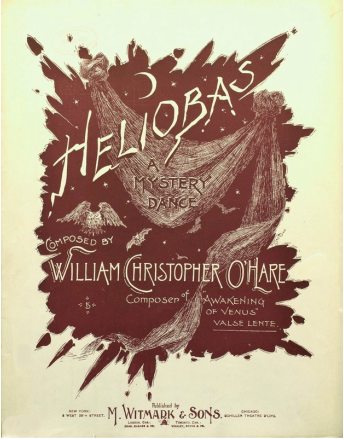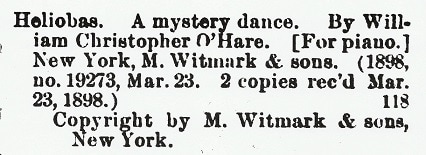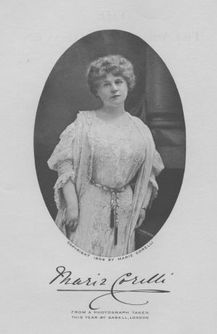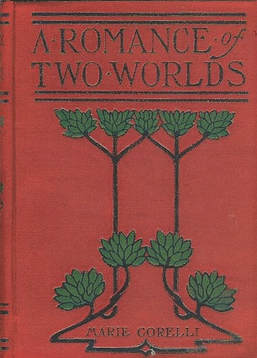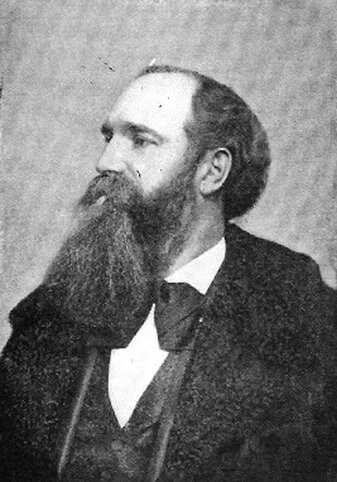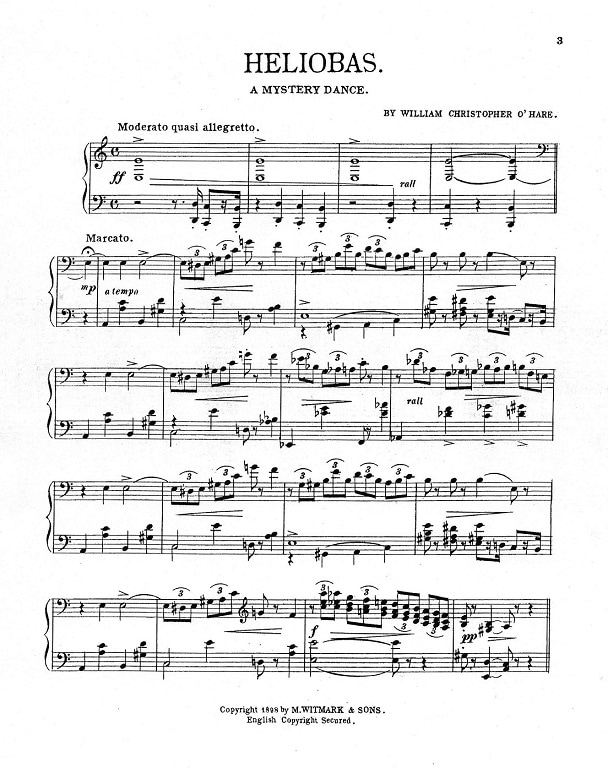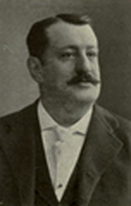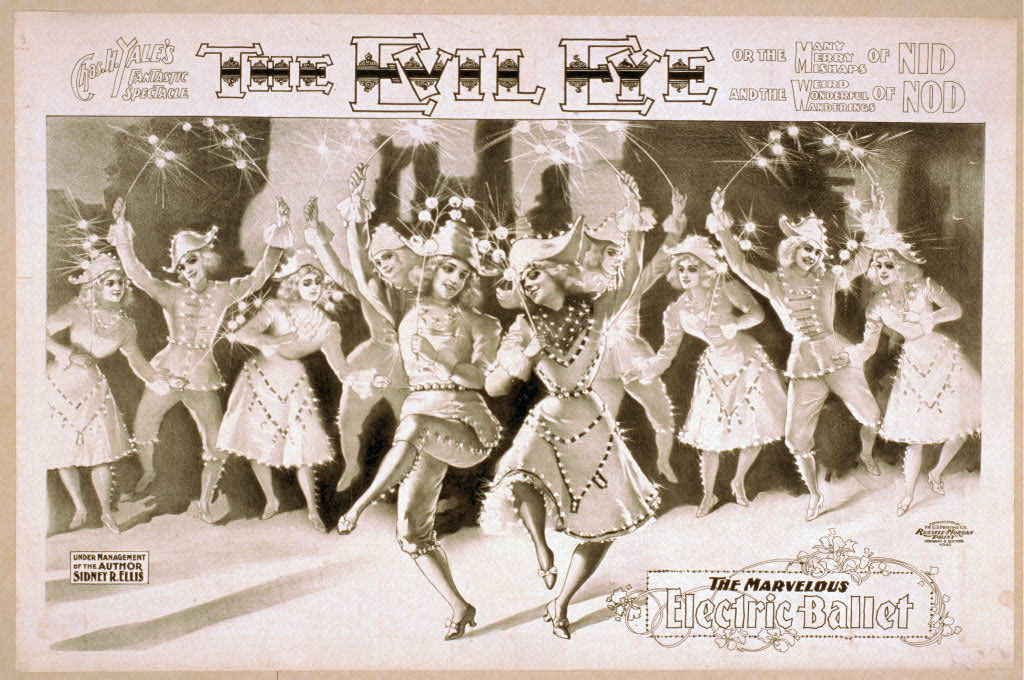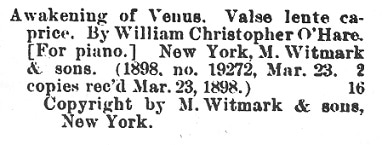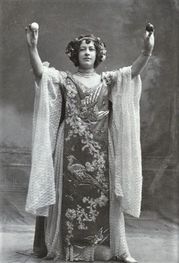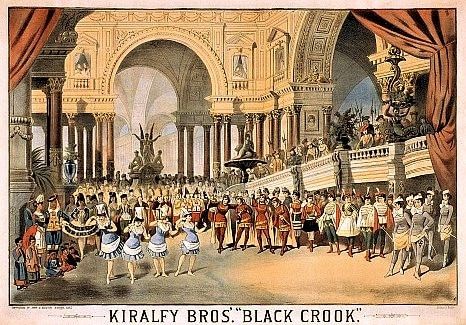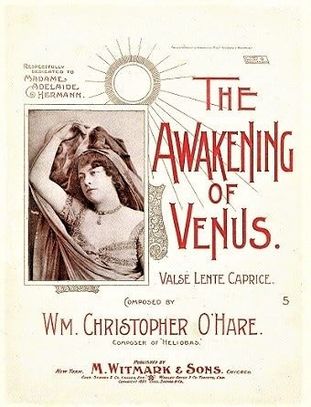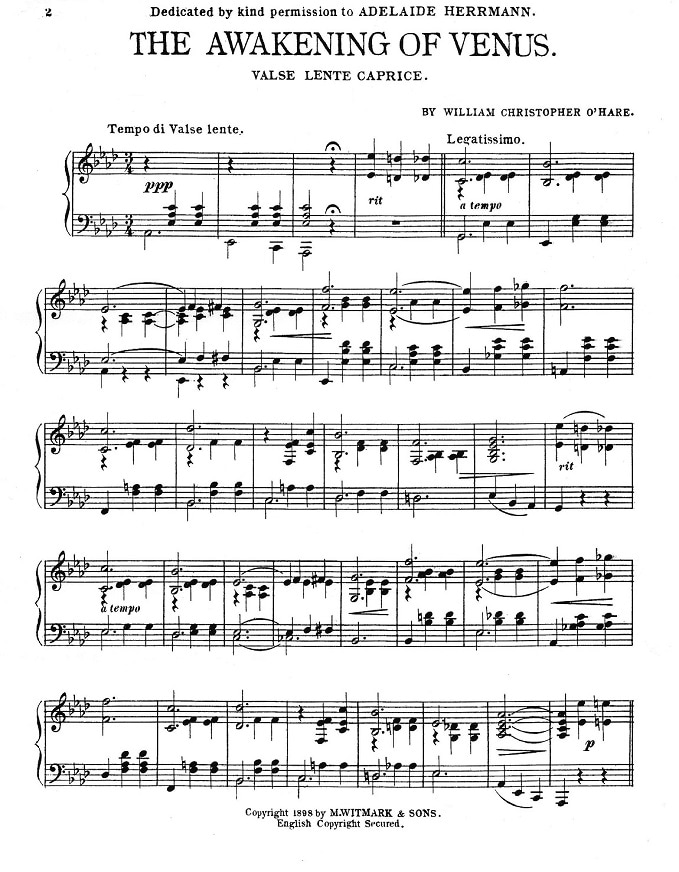Blue Bird's Song (c. 1889)
While commenting on several 1889 Christmas gifts, the Shreveport Times social columnist, Julia Rule (known as "Pansy"), remarked, "Prof. W. C. O'Hare sent the Blue Bird's Song, which fills the pages of a neat Christmas offering."
Although Blue Bird's Song hasn't been located, Rule's social column reveals that O'Hare was composing during his earliest Shreveport years and quite likely had been doing so in Washington, D.C. before being hired as music director at Shreveport's Grand Opera House. However, no record of earlier compositions has been found.
Although Blue Bird's Song hasn't been located, Rule's social column reveals that O'Hare was composing during his earliest Shreveport years and quite likely had been doing so in Washington, D.C. before being hired as music director at Shreveport's Grand Opera House. However, no record of earlier compositions has been found.
Miscellaneous Sacred Music (c.1889)
During 1890, Shreveport newspapers documented various church performances of sacred musical settings composed by O'Hare.
- Agnus Dei
- Gloria Tibi
- The Lord's Prayer
Liturgical pieces by the same names were later published.
Americanisms/"Americanisms" (1892 or pre-1892)
During O'Hare's 1892 visit to Washington, D.C., the Washington Herald commented, "Mr.O'Hare has found time to write a considerable quantity of very good music. His 'Americanisms' has taken in the South like wildfire, while some of his other compositions are not far behind."
The auxiliary verb has appears to indicate that the word Americanisms serves as a proper noun (in this case, the title of a single piece of music) rather than as a common noun indicating a style of music (music that is in some way typically American). However, because I have not located other mentions of the music, or any manuscript or published music that might fit this description, it's possible that the auxiliary verb should have been have and that O'Hare's "Americanisms" may have been early folk-inspired (possibly African American) pieces.
The opening reference to "a considerable quantity" of O'Hare compositions indicates that he may have composed a noteworthy number of lost pieces.
The auxiliary verb has appears to indicate that the word Americanisms serves as a proper noun (in this case, the title of a single piece of music) rather than as a common noun indicating a style of music (music that is in some way typically American). However, because I have not located other mentions of the music, or any manuscript or published music that might fit this description, it's possible that the auxiliary verb should have been have and that O'Hare's "Americanisms" may have been early folk-inspired (possibly African American) pieces.
The opening reference to "a considerable quantity" of O'Hare compositions indicates that he may have composed a noteworthy number of lost pieces.
Veni Creator/Art Thou My Father (John F. Ellis & Co, Washington, D.C., September 1892)
O'Hare's Veni Creator currently holds the distinction as the earliest located copyright on any music O'Hare composed. An advertisement in Etude identifies it as a sacred vocal trio for soprano, alto, and tenor with Art Thou My Father? as the title. Since O'Hare served as organist and choir director at Holy Trinity Catholic Church in 1892, that choir probably performed it although no record has been located in Shreveport newspapers.
My Ask-a-Librarian request to the Library of Congress has failed to turn up a copy of Veni Creator.
Presumably, an 1892 Washington Herald article referred to this piece and others not known or located when the paper wrote of O'Hare, "a prominent publishing firm of this city will soon issue a series of sacred pieces which he considers among his best."
Presumably, an 1892 Washington Herald article referred to this piece and others not known or located when the paper wrote of O'Hare, "a prominent publishing firm of this city will soon issue a series of sacred pieces which he considers among his best."
Excentrique (probably unpublished, c. early 1893)
An original, otherwise unlocated O'Hare composition appeared among the pieces O'Hare's Grand Opera House orchestra performed the night of actor Richard Mansfield's performance in Beau Brummel:
His quaint little composition Excentrique shows exquisite taste and musicianship.
Elsewhere, In a complete listing of orchestra selections that evening, the piece is identified as Ecentrique without attribution to O'Hare.
The Clockmaker's Dream (probably unpublished, c. 1893)
This string quartet appears in Part Two, the student section, of O'Hare's June 1893 Dudley Buck Choral Society concert program. The pizzicato technique hints that one or more of the string instruments probably reproduced the sound of a ticking clock.
In the Woods of Tennessee (Junius Hart, New Orleans, 1894)
|
In the Woods of Tennessee's sentimental lyric describes the echoes of a whippoorwill's plaintive call and the gently rustling leaves tinged with the blood of those who died in the woods. Siblings recall their lost brother who "went to the southern war" and died "on the banks of the ole Hatchie," hinting that the song commemorates the Battle of Hatchie's/Davis Bridge, Oct. 5, 1862. After alluding to all who lie in forgotten graves "along Potomac waves," near W. C. O'Hare's former home, the siblings fondly recall their brother, sacrificed on "his country's altar in the woods of Tennessee."
Because no O'Hare family connections to the song have been identified, In the Woods of Tennessee might have been inspired by a death in Lottie Slater O'Hare's Western Tennessee family, by wife Lottie's Tennessee origin, by Shreveport's annual encampment of Confederate veterans (an event widely reported in local newspapers and for which O'Hare sometimes provided music), or by some other event in the city that had once served as the Confederate capital. Whatever the case, Shreveporters would have appreciated the melancholy memories of a lost Confederate brother. | ||||||
Junius Hart Piano House, New Orleans
Junius Hart was primarily a piano manufacturer and dealer. Along with Grunewald's Music Store and A. E. Blackmar's, Hart also published music. Because each of these music stores was located on Canal Street, the area became known as New Orleans' Tin Pan Alley.
In the Woods of Tennessee at the Grand Opera House
In the Woods of Tennessee was published in 1894 as a song rather than an instrumental piece. One can guess that it was sung in Shreveport at some point although I haven't been able to confirm this. However, O'Hare also arranged the piece for small orchestra as indicated by the social columnist's comment on its 1895 performance the evening of the play Monte Cristo:
The orchestra, although composed of only three artists and as many instruments, in the hands of Prof. O'Hare, Mr. Gus Klein, and Harry Weil, was never better, and the Soldier's Chorus, In the Woods of Tennessee, and other productions were most excellently rendered. The company, play, and music will always be memory like a sweet dream.
Had this been an orchestral accompaniment to a vocalist or vocal ensemble, "Pansy" almost certainly would have named the singer or singers as was this social columnist's normal practice.
The Cotton Pickers (Standard Music/Grasmuck & Schott, NY, 1894)
|
O'Hare's earliest known cakewalk includes a small amount of syncopation and exhibits the pentatonic melody and irregular length strains that later led Isidore Witmark to call him "a composer of quaint numbers."
"Pansy," the social columnist, indicates that she had simultaneously received copies of In the Woods of Tennessee and The Cotton Pickers: In the Woods of Tennessee and Cotton Pickers are the two characteristic instrumental productions of Prof. W. C. O'Hare which are gratefully acknowledged as New Year greeting. Nobody loves piano music better than I, and the remembrance will serve to enliven the lonesome hours when brought to life by the manipulation of the ivories. | ||||||
Grasmuck & Schott copyrighted O'Hare's orchestra and band scores in 1895 and 1896, respectively.
Shreveport's Cotton Pickers
Planters in the Red River area around Shreveport were known for their cotton production, and Shreveport served as transportation hub. Large numbers of cotton pickers were brought in for the harvest season. On the levee to one side of downtown, stevedores loaded baled cotton onto riverboats destined for New Orleans and beyond. A Shreveport paper describes the life-charged harvest atmosphere:
Yesterday Commerce Street was crowded with wagons and the pavements and stores with negroes full of life and animation. The army of cotton pickers--old and young--were on the move for the adjacent cotton fields. They were securing a week's supplies and will not be in evidence again until next Saturday when they will draw their money for their work--a stipulated price per 100 pounds of cotton in the seed. . . . It takes a cotton picker all Monday to get ready for and reach the destination. Saturday is a holiday in which to spend his money and go 'shopping.' Four days constitutes a week's work with the Southern cotton field hand. The other three days are for frolic and church going, not counting rainy days. And there is the southern black cotton picker!
As a Shreveport resident for roughly five years, O'Hare would have experienced the cotton pickers' annual arrival and payday visits. Whether or not he picked up a melody from them is impossible to know.
New York Popularity of The Cotton Pickers
In 1898, the Shreveport Times remarked, "The Cotton Pickers, published some time ago, is in the repertoire of nearly all the orchestras at the roof gardens, etc., and has been performed by bands at all of the leading watering places in the vicinity of New York."
The New York Evening Post helps support Shreveport's claim of its hometown composer's popularity by stating that John Philip Sousa, the country's leading band master, was among those who had accepted The Cotton Pickers.
This would not be Sousa's last acceptance of an O'Hare cakewalk.
The New York Evening Post helps support Shreveport's claim of its hometown composer's popularity by stating that John Philip Sousa, the country's leading band master, was among those who had accepted The Cotton Pickers.
This would not be Sousa's last acceptance of an O'Hare cakewalk.
Miscellaneous Sacred Music (1896-1897)
The following O'Hare musical settings for sacred texts appear in newspapers during this time:
- Jubilate
- Gloria Tibi
- We Bend
Heliobas: A Mystery Dance (M. Witmark & Sons, 1898)
O'Hare's first two Witmark publications were Heliobas and The Awakening of Venus, copyrighted the same day.
| |||||||
Source of the Title and a Mysterious Inscription
|
British novelist Marie Corelli's The Romance of Two Worlds must have inspired O'Hare's unusual title.
In the novel, Corelli draws on others' medical research into electrotherapy, a popular topic that had also influenced Mary Shelley's Frankenstein. Corelli's protagonist, an unnamed female musician, is advised to visit Casimir Heliobas, a Chaldean mystic who can use an electric treatment to cure her physical and mental illness and give her the power to create music superior to anything she has previously created. Lightning bolts on the sheet music cover could represent Heliobas' special power. In the following passage, Cellini, an artist Heliobas previously helped, advises the young, ailing musician: 'You are an improvatrice--that is, you have the emotional genius of music, a spiritual thing unfettered by rules, and utterly misunderstood by the world. You cultivate this faculty regardless of cost; you suffer, and you will suffer more. In proportion as your powers grow, so will your health decline. "Where is this Heliobas?" she asks, "In Paris?"
|
Other clues strengthen the connection with Correlli's novel. One such clue came to me by extraordinary good luck. Before I requested the color copy from the Library of Congress, New York Public Library had sent a black and white copy, which had arrived with a surprising handwritten inscription.
|
The dedication raised several questions:
Eddy (1851-1937) was quickly identified as the best known American organist of the late 19th century. A 1937 New York Times article reporting his death ends with this statement: "Concert authorities have said Mr. Eddy probably played to more audiences than any other organist in America." Therefore, O'Hare, an organist, had given Heliobas to a famous fellow organist. Learning that Casimir Heliobas in The Romance of Two Worlds was an organist helping and inspiring a younger organist provided a partial explanation, but not a fully satisfying one. Learning that Eddy was living in Paris from 1895-1903--the city of Casimir Heliobas--provided a better rationale for sending the piece to Eddy. It also helped to explain O'Hare's inclusion of "USA" in his inscription. |
But there's more. On January 16, 1900, during time back in the United States before returning to Paris, Clarence Eddy gave a pipe organ concert at Shreveport's First Methodist Church, one of the places where W. C. O'Hare occasionally served as organist. Eddy's sharing that organ, if only for a brief time, provides a more satisfying possible motivation. O'Hare could have sent the sheet music to Eddy while he was still in Paris, given it to him in Shreveport, or sent it to him later. However Eddy received the signed copy of Heliobas, O'Hare had given the world-famous organist a reason to remember a younger Shreveport organist on the verge of relocating to New York City.
How O'Hare's autographed gift landed in the NYPL collection is another question. Perhaps the library purchased the music when Merwin-Clayton Sales Company auctioned Eddy's library in New York City during December 1910.
How O'Hare's autographed gift landed in the NYPL collection is another question. Perhaps the library purchased the music when Merwin-Clayton Sales Company auctioned Eddy's library in New York City during December 1910.
Someone has suggested that O'Hare might have intended his use of cascading triplets to mimic electricity. When I asked pianist Richard Dowling for his opinion, he pointed out that any musician could individually interpret the sound of electricity, but Dowling added that he couldn't rule out the possibility. Having previously commented that Heliobas reminded him of Gounod's The Funeral March of the Marionette, Dowling turned his attention to triplets at the bottom of the first and second pages and in the middle of the fourth--pages numbered 3, 4, and 6. The page 3 example appears above.
Dowling added:
Dowling added:
They certainly reinforce the dance-like character of the work…indeed it is subtitled, "A Mystery Dance" after all…and perhaps that's why I hear a resemblance to Gounod's dancing puppet.
As for a musical representation of an electrical current in that particular phrase, that's tough to say. Electricity would've been a new-fangled (and rather scary) invention in 1898. . . . Depending on how one performs Heliobas, that triplet passage could be made to sound "scary" and electrically charged. Whether it depicts an actual electrical current, I really couldn't say, but if you have some sort of point of reference or proof of that, it wouldn't be inconceivable.
Given the possibility that O'Hare may have intended those parallel descending triplets or other sets of ascending and descending or descending and ascending triplets to represent electricity, another interesting question arises concerning a possible theatrical us of the piece.
Because I can only guess at O'Hare's intention based on the literary inspiration for his title, I'll end with Richard Dowling's final points. Dowling calls Heliobas "a charming salon piece . . . albeit one with a bit of a sinister undertone thanks to its being composed in the key of A Minor and having its main melody in the tenor register of the piano (mimicking a bassoon . . . at least to my ears)." Considering the spooky bassoon-like sound an "orchestral influence," Dowling lists two other musical elements contributing to that spookiness: "The clever chromaticism and quick modulations are rather unsettling (on purpose) and help give the music its 'mysterious' flavor, too."
The Awakening of Venus (M. Witmark & Sons, 1898)
Copyrighted the same day as Heliobas, this O'Hare waltz includes a published dedication to the famed Adelaide Herrmann.
On July 31, 1898, The Shreveport Times noted that The Awakening of Venus had "attracted the attention of John Philip Sousa." If accurate, this would make it the second O'Hare composition to have attracted Sousa's notice, and it wouldn't be the last.
|
Adelaide Herrmann
O'Hare dedicated The Awakening of Venus to Adelaide Herrmann, widow of magician Alexander Herrmann, billed as "Herrmann the Great." She is said to have met Alexander during a transatlantic voyage as she was coming to the U.S. with a dance troupe performing in the Kiralfy Brothers' "spectaculars." Adelaide became Alexander's assistant and a dancer in his show. Following his death, she teamed up with his nephew Leon Herrmann, who assumed the title "Herrmann the Great." Eventually, Adelaide parted ways with Leon to star in her own show as the first female magician. |
| |||||||
Mme. Herrmann in Shreveport
Like theatrical producer Charles H. Yale to whom O'Hare gave Heliobas, Adelaide Herrmann came to Shreveport approximately once a year.
In December 1897, approximately three months before Witmark copyrighted The Awakening of Venus, the widowed Adelaide and nephew Leon performed at the Grand Opera House.
One reporter commented on Adelaide Herrmann's show and fame:
In December 1897, approximately three months before Witmark copyrighted The Awakening of Venus, the widowed Adelaide and nephew Leon performed at the Grand Opera House.
One reporter commented on Adelaide Herrmann's show and fame:
The Herrmanns are giving this year probably the most elaborate and interesting performance of mirth, magic and mystery that has ever made a tour of the country. The company is known as Herrmann the great company and judging by the wonderful enthusiasm with which they have been received in every city visited the title of "great" is very appropriate. They carry two carloads of gorgeous scenery and twenty people, and are headed by Leon Herrmann, the nephew and successor to Herrmann the great, and Adelaide Herrmann, the talented and handsome widow of the great magician. The new Herrmann will make his first appearance here next Monday night, December 20th . . .
The public needs no introduction to Adelaide Herrmann. For many years the constant companion and assistant of her husband, and her name is as familiar to theatre goers as his. Mme. Herrmann will appear in the brilliant and dazzling dances that have delighted and astonished audiences in every part of the world. These spectacular dances are the most elaborate and bewilderingly fascinating that have ever been on stage. Mme. Herrmann has added to her repertoire a new dance invented by herself during the past summer which has caused a genuine sensation. It is the "fire dance," and to the audience it seems that Mme Herrmann is in the centre of a column of actual flame and smoke, so realistic is the imitation of fire produced by the wonder flights used and the mass of gauze in which she is clothed.
It's uncertain whether Adelaide Herrmann ever danced to the music O'Hare dedicated to her--a piece whose title had probably been inspired by classic art. However, he must have hoped she would.
Adelaide Herrmann, the Queen of Magic, died in 1932, approximately 34 years after O'Hare composed The Awakening of Venus.
Adelaide Herrmann, the Queen of Magic, died in 1932, approximately 34 years after O'Hare composed The Awakening of Venus.
Background image, top of page: portion of Heliobas cover

